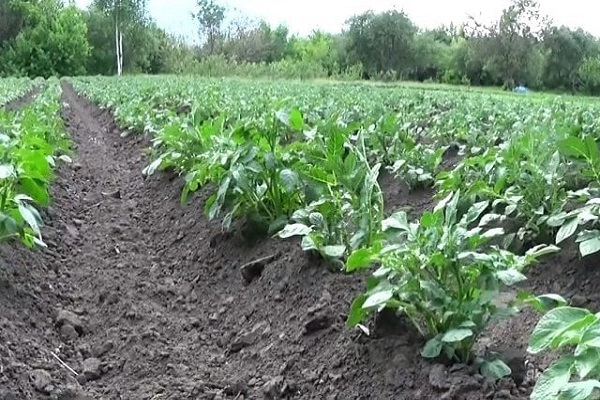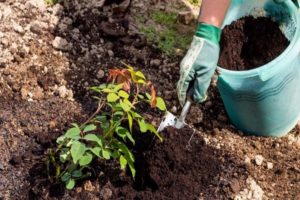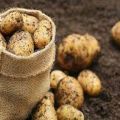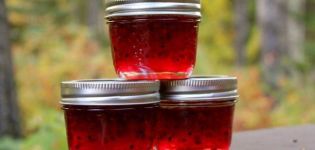When and how to sprinkle potatoes correctly, why and what is it for?
Many gardeners are engaged in growing potatoes in their summer cottages. During its cultivation, it is imperative to engage in hilling. This procedure is carried out for better development of the planted crop and obtaining a good harvest. Before you start loosening the soil, you need to familiarize yourself with why to huddle potatoes and when to do it.
Why do people spud potatoes?
Many people ask the question: is it necessary to huddle potatoes? Therefore, before hilling potatoes manually, you should determine the main reasons for such a procedure. There are four reasons why you need to spud potatoes:
- Improving the formation of additional shoots. Regular hilling of the bushes promotes the growth of plants. It also has a positive effect on the number of formed tubers, since after loosening the soil, more nutrients enter the lower part of the plants.
- Providing better protection of seedlings from a drop in temperature. After planting the plant in areas with an unstable climate, it is recommended to spud the potatoes with a hoe to protect the root system from night frosts. The soil collected by the mound near the stem of the bushes is a protective "blanket" for them.
- Improved wind gust protection. It is known that after planting, the tallest seedlings begin to break due to strong winds. A hilled plant has a denser base, which makes it less likely to break.
- Reducing the number of weeds. Some are engaged in hilling potatoes so that there are not too many weeds on the site. This procedure helps to get rid of creeping wheatgrass, which damages tubers during growth.

When to spud potatoes?
The timing of hilling is a serious issue that must be resolved before planting. You also need to figure out how many times to spud potatoes in order to get a good harvest. Gardeners carry out this procedure three times:
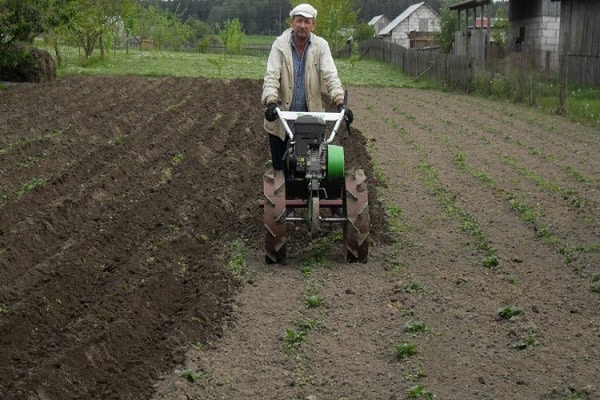
- For the first time, manual hilling of potatoes is carried out after the plants have grown by 10-15 cm. If night frosts are predicted for the coming days, you will have to completely cover the seedlings with soil for better protection. In the absence of a nighttime drop in temperature, the plant should be slightly spud.
- The second time it is necessary to deal with hilling after the appearance of the first tubers. Most often, they begin to form two weeks before flowering.
- To huddle potatoes for the third time, you need to wait until the plant grows to 25-30 cm. This procedure is already carried out in the first half of summer in the absence of frosts at night.Therefore, the base of the seedlings is sprinkled with a small amount of soil. You can also scatter soil between the branches of the bushes so that in the future they grow better in breadth.
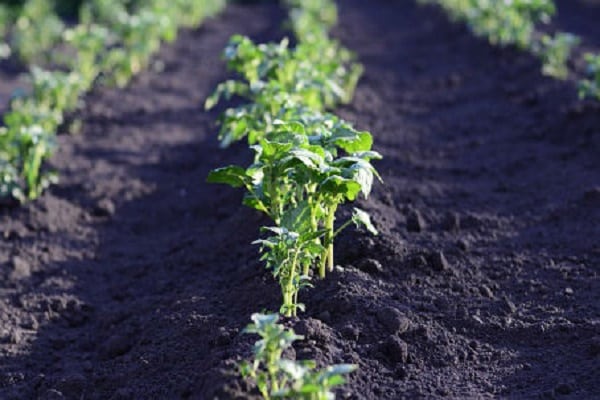
How to sprinkle potatoes by hand correctly?
Before hilling plants with a hoe, you need to quickly pre-prepare the site. First, you should completely get rid of all weeds that interfere with the normal development of potatoes. After weeding, the weed grass can not be removed, as it will protect the soil from temperature changes in the future.
It is necessary to loosen the soil only after preliminary watering or rains. In a rainy summer, potatoes should huddle three days after the last rainfall. It is impossible to rake too dry or waterlogged soil, as this will harm the bushes.

It is not difficult to dig in plants by hand with a hoe. This can be done in two ways:
- In the first case, the earth is raked to the bush from all sides at once. This is done to compact the auxiliary stems of the plant.
- The second method differs from the first in that in this case you will have to fill the earth in the center of the bush during the flowering of potatoes. This method is used to make the bush grow in breadth.
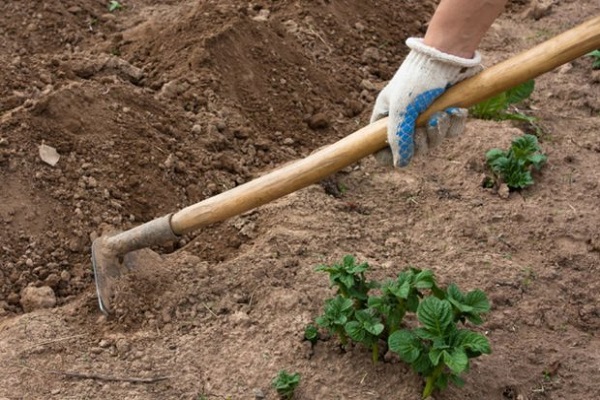
How to huddle potatoes with a hiller?
Often, not a hoe is used for the procedure, but a special manual hiller. Experienced gardeners claim that this is the most convenient and affordable device that helps to rake the land when growing various crops. This device can be purchased in special stores for summer residents or try to make it yourself. Such hand tools consist of two dumps, the angle between which should be 45 degrees, and the handle. For self-production of a hiller, you will need the following materials:
- 2 hollow pipes;
- steel sheet of millimeter thickness;
- metal heating lamp;
- Bulgarian;
- welding machine;
- lanyard.

The production of a manual hiller is carried out in three successive stages:
- Creation of a vertical rack. To do this, you will have to make a small bend in one pipe 100 cm long. It should be located about 25-30 cm from the top of the pipe.
- Making a plow. Any manual hiller must have one plow. To make it, you will need to cut two steel plates with a grinder. They are installed at right angles to each other and connected by a welding machine.
- Creation of an undercut knife. This element is the most important part of the design, since it is the knife that assumes all the resistance during the processing of the land. It is also made from two steel sheets. They are welded at a 45 degree angle and attached to the plow structure.
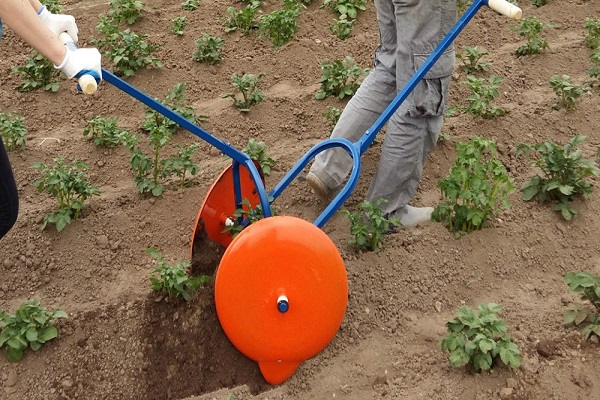
It is easy to cultivate the land with such a hiller. To do this, you just need to deepen the plow into the ground and slowly pull the device along the area with potatoes.
How to properly spud potatoes with a walk-behind tractor?
Some gardeners are surprised: why do you need to buy a walk-behind tractor if you can do without it? Its purchase is justified by the advantages of this device. The walk-behind tractor is universal, which means that it can be used not only for loosening the soil, but also for collecting ripe tubers. The main disadvantage of a walk-behind tractor is too high a cost, which is why not everyone can afford it.
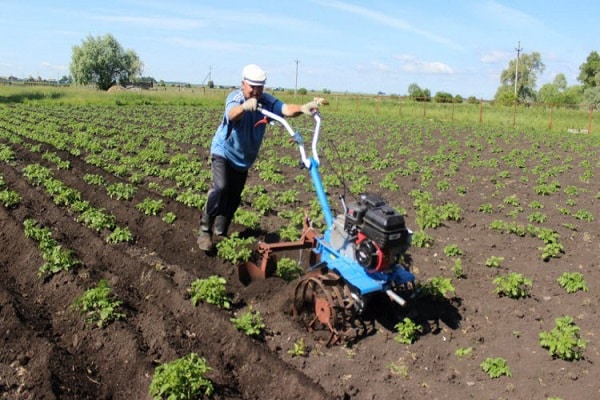
Before using the walk-behind tractor, you need to make sure that all plants are planted at the same distance from each other. Two bushes should be 60–70 cm apart from each other.
To loosen the soil with such a device, two openers should be installed on it, which are located in the front, and one hiller at the back. It is used to cover the bushes with soil. Some people recommend using three-row nozzles, which allow you to process three rows at a time.
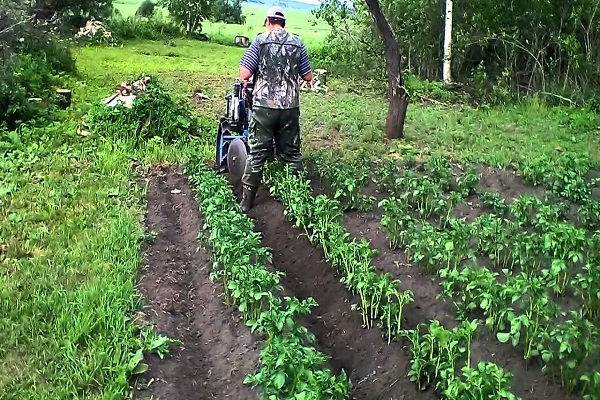
Conclusion
Many gardeners do not know whether it is necessary to hitch potatoes and whether it is possible to carry out this procedure when the plants begin to bloom. To deal with this, you need to find out why and when to spud potatoes for the first time.
